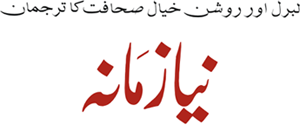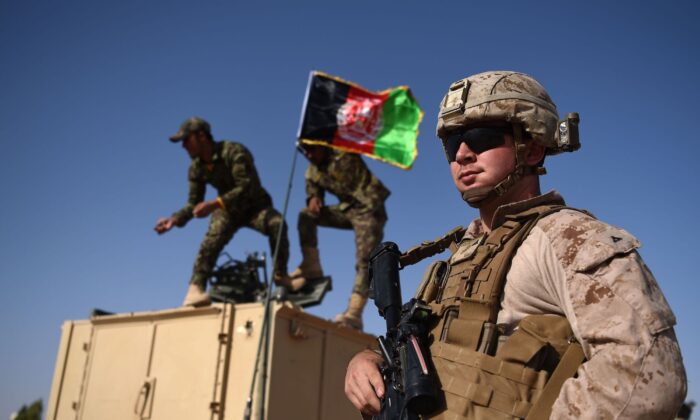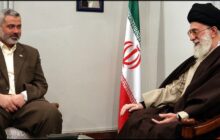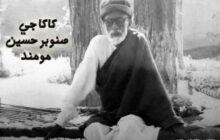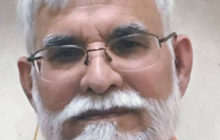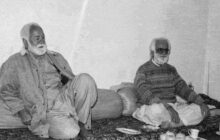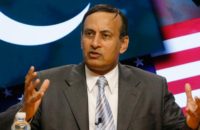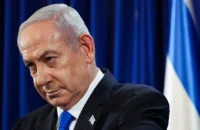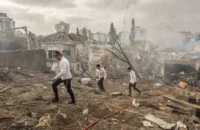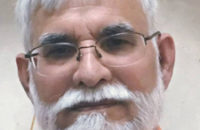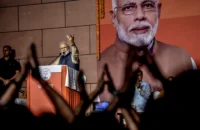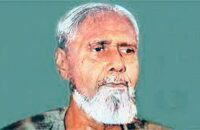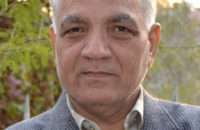By Khaled Ahmed
Prime Minister Imran Khan pronouncing a strange “fatwa” on women’s Islamic purdah and calling Osama bin Laden “shaheed” could be his way of getting ready for the new Afghanistan emerging after the exit of the Americans from there in September 2021. The world is also scared – like Prime Minister Khan – of the post-US Afghan scenario. Foreign Minister Shah Mehmood Qureshi’s later floundering too was apparently not accidental. His pause before bypassing the question put to him on Bin Laden’s martyrdom showed deliberate ambiguity on an issue that demanded a clear answer: how can a terrorist be a martyr? Yet he would not commit perhaps out of fear of a backlash from the PTI ranks and his conservative constituency. His non-committal stance on a person responsible for thousands of deaths throws some light on the uncertainty surrounding the exit of the US from Afghanistan.
The post-US scenarios
According to recent research, conducted by George Mason University in the US, the following scenarios in the post-US situation are to be expected
- The current constitution will be thrown out. The Taliban want profound social and political changes. The Afghan army or the Afghan National Defense and Security Force (ANDSF) is undermined not merely by a lack of capacity but also by pervasive corruption and factionalization around particular commanders and patrons. With the exception of the badly overused Afghan Special Security Forces, the conventional forces and the police have rarely taken the fight to the Taliban. Under the militants’ heavy pressure, many units have been striking accommodation deals with the Taliban. This trend may accelerate, especially if the Taliban manage to maintain enough discipline to avoid reprisals against its units that make such deals.
- The Taliban have repeatedly taken over provincial capitals and currently encircle several of them and can rapidly put pressure on several more. Moreover, Kabul’s control of some provincial and district capitals is often only in name, with officials hunkered down in compounds, with their access in and out of town and life on the street controlled by the Taliban. It was only the US Air Force that kept the Taliban from holding on to provincial capitals it previously managed to capture, such as Kunduz and Ghazni. The big question is whether the Taliban can pounce on and conquer several provincial capitals at the same time — if so, ANDSF will struggle dramatically and disintegration pressures will grow.
- The Taliban’s top military commanders are unlikely to split off at any scale that would threaten the group for some time — not until actual national power arrangements are struck. Then, conceivably, some unsatisfied commanders could throw in their lot with the Islamic State in Khorasan group or, more likely, act independently. Another critical factor is the Afghan political elite. It is expected to continue factionalizing and seek favor with the Taliban. In 2021, the divisions within and politicking of the Afghan elite only intensified as various powerbrokers jockeyed for key positions in an interim government the United States had promoted through the ill-fated Istanbul process.
- Key powerbrokers in Afghanistan have been attempting to come together with President Ashraf Ghani in a national unity council that would demonstrate unity to the Taliban. For the past two years, the Taliban has been intensely negotiating with powerbrokers not just in its southern Pashtun strongholds, but also with Tajiks and other minority politicians in the north. Those negotiations have been going on far longer than the unity council negotiations.
- The Taliban delays striking bargains with Afghan powerbrokers until it has visibly taken more territory, particularly several provincial capitals. Currently, the Taliban is in a highly auspicious position around at least 12 provincial capitals. With the end of U.S. air support for the Afghan military, the Taliban will likely be in a position to pounce on several provincial capitals simultaneously, max out Afghan Special Security Forces capacity for pushback, and hold several of them. A cascade of detrimental events could unfold, including powerbrokers fleeing Afghanistan (as they were on the cusp of doing in 2015 when the Taliban temporarily took Kunduz City and seemed poised to move on to the province of Takhar) and defecting ANDSF commanders and units cutting their own deals with the Taliban.
- Even Kabul might fall to the Taliban quickly — or the city’s streets could see a bloodbath, as two decades of accumulated local resentments over alleged land theft after 2001 turned neighbors and neighborhoods against each other.
- Political powerbrokers in the north are substantially divided. More importantly, the Taliban have built inroads into the north. The group is militarily powerful in Kunduz, Baghlan, Badakshan, and Takhar provinces. It has cultivated Tajik cadres as well as northern Pashtuns alienated by what they see as discriminatory rule of non-Pashtun majorities in the northern provinces. These actors are either members of formal Taliban units or Taliban proxy militias in the north. Some of the existing militia forces, such as some former Hezb-e-Islami, would also likely defect to the Taliban (having previously been flipped to the Afghan government side).
There is no solution from the outside to Afghanistan’s violence and the ascendance of the Taliban. International engagement is likely to influence developments in Afghanistan at the margins. Various countries have some capacity to shape the Afghan government, the Taliban, and the country’s powerbrokers. However, their actions are more likely to intensify violence, rather than temper it, even though all regional actors are against civil war, an Islamic emirate, or a government exclusively run by the Taliban.
Important note: The arrival of the Taliban into formal government in Afghanistan can reduce Pakistan’s leverage over the group, especially if influential international actors maintain working relations with the Taliban. Even before a rise to formal power, if the Taliban are able to move their political leaders and their families from Pakistan into Afghanistan, Pakistan’s leverage will decline. The balance of power between Pakistan and the Taliban will also be influenced by internal rebalancing of power within the Taliban among the Quetta and Peshawar Shuras, the Haqqanis, military chief Mullah Mohammad Yaqoob, older leaders such as Mullah Abdul Ghani Baradar, and the Taliban’s field commanders.
Taliban and Pakistan
Two-terms senator Farhatullah Babar wrote in The Friday Times (June 4, 2021): “The Afghan Taliban have historic relations with Pakistan’s security forces as well as with armed groups like TTP, LeT, and others and those links have not been completely severed. The so-called Dawn Leaks was nothing but an expression of deep anguish by the civilian political leadership. But it led to the chasing out of office of a legitimate prime minister. Worries that there is no course correction persist and haunt the present moment. Since October 2001, we have welcomed and hosted Taliban and Al Qaeda leaders like Osama Bin Laden, Mullah Mansoor Akhtar, Mullah Haibatullah and countless more but have denied Quetta Shura, Haqqani network and safe havens on our soil.
“General Musharraf used to tell the world: Give us the addresses and contact numbers of the Shura and the Taliban leaders and we will take them out. Offending common intelligence comes too easily to our security establishment. The mindset has not changed. Over the past decades, the relationship between Taliban and Pakistan’s security establishment has grown so close that some have even likened it to the relationship between Tehran and Hezbollah.
“Proxy wars were waged across its borders through non-state homegrown militants with close links to Taliban. We denied it. But the truth is that proxy wars have been a main driver of continuing conflict in the Pakhtun belt. Whatever is happening in the country today, whether continued militarization of ex-FATA or the opaque internment centers, or the phenomenal rise of extremist sectarian groups, it is the direct outcome of this disastrous policy. Frustrated, the tribal youth finally rose a few years ago. They expressed their anger using metaphors that could not have been imagined a few years ago.”
